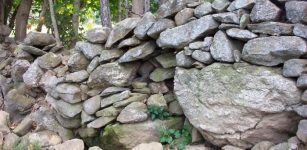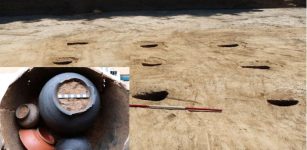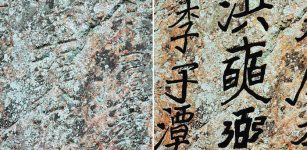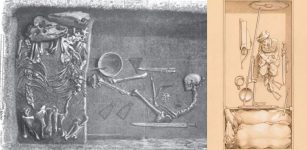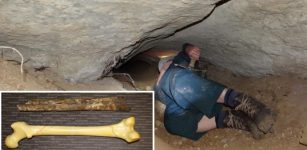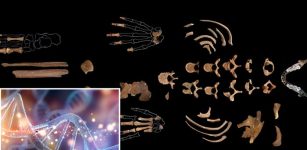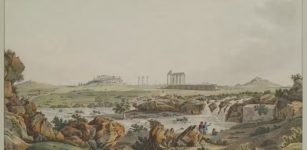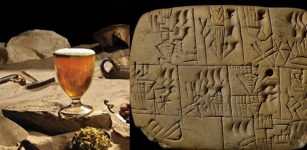Mystery In The Stones: Rujm El-Hiri (Wheel Of Ghosts) Was Not An Ancient Observatory – So Why Was It Built? – New Study
Conny Waters - AncientPages.com - A recent study conducted by Tel Aviv University in collaboration with Ben-Gurion University of the Negev has unveiled groundbreaking findings concerning the renowned Rujm el-Hiri site, colloquially referred to as the "Wheel of Ghosts," located in the Golan Heights.
Left to right: Dr. Olga Khabarova & Prof. Lev Eppelbaum. Image credit: TAU University
Through comprehensive geomagnetic analysis and tectonic reconstruction, the researchers concluded that geodynamic movement over a span of 150 million years, occurring at an average rate of 8–15 millimeters per year, resulted in substantial shifts in the Earth's surface. This process led to significant rotation and reorientation of the ground over millennia.
This discovery presents a compelling challenge to the commonly accepted theory that the structure functioned as an astronomical observatory. The original alignment of its walls and entrances does not align with celestial observations, contradicting previous hypotheses.
This evidence strongly suggests we need to reconsider our understanding of the structure's purpose. The finding prompts further inquiries concerning the site's potential identification as an observatory.
Aerial view of Rujm el-Hiri - Distance-height profile of the surrounding area relative to the northernmost point of the Sea of Galilee (vertical axis—altitude below) above sea level, in meters; horizontal axis—the distance in km). The vertical line indicates the location of the site. Image credit: Tel Aviv University
The researchers utilized geophysical and remote sensing methodologies to illustrate that the current orientation of Rujm el-Hiri has shifted from its original position as a result of millennia of geodynamic changes.
The team undertook a preliminary mapping and documentation project of the archaeological landscape within a 30-kilometer radius around the Sea of Galilee. This involved a visual analysis of the area to identify characteristic landscape features linked to historical human activities, as well as efforts to reconstruct archaeological objects.
"The study was based on calculations of the sky map and aligning the directions of the solstices, equinoxes, and other celestial bodies as they appeared between 2500–3500 BCE, coordinated with the symmetry and entrances of Rujm el-Hiri in its current position," according to the research team.
"The findings show that the entrances and radial walls during that historical period were entirely different, reopening the question of the site's purpose."
The study offers the first detailed mapping of the archaeological landscape around Rujm El-Hiri, utilizing advanced satellite technology. It identified unique landscape features, such as circular structures with diameters ranging from 40 to 90 meters and thick walls. Additionally, round enclosures approximately 20 meters in diameter were discovered, which seem to have been used for agricultural or herding purposes.
Numerous burial mounds, also known as tumuli, have been documented in the area. While their primary function was as burial sites, evidence suggests that some of these structures may have also served alternative purposes such as storage facilities, shelters, or even dwellings.
"This new study not only opens a window to understanding Rujm el-Hiri but also enriches our knowledge of ancient life in the Golan Heights and the connections between various archaeological findings in the area," the researchers summerized.
The study was led by a research team headed by Dr. Olga Khabarova and Prof. Lev Eppelbaum of the Department of Geophysics at the Porter School of the Environment and Earth Sciences, Tel Aviv University, in collaboration with Dr. Michal Birkenfeld of the Department of Archaeology at Ben-Gurion University.
Written by Conny Waters - AncientPages.com Staff Writer






